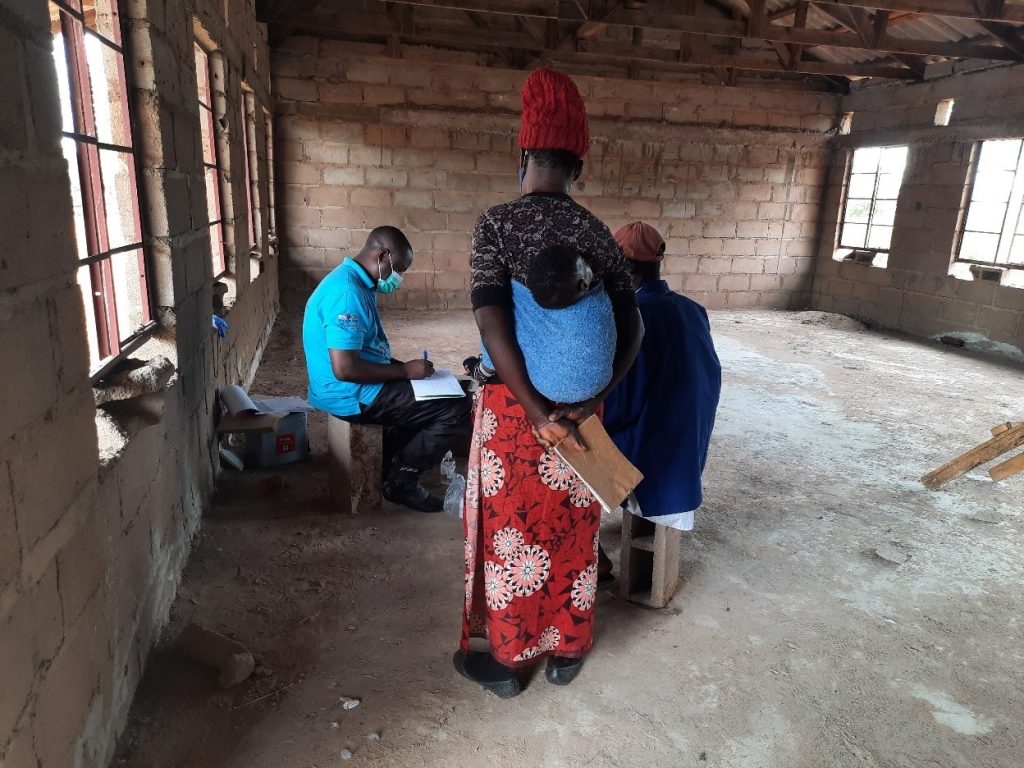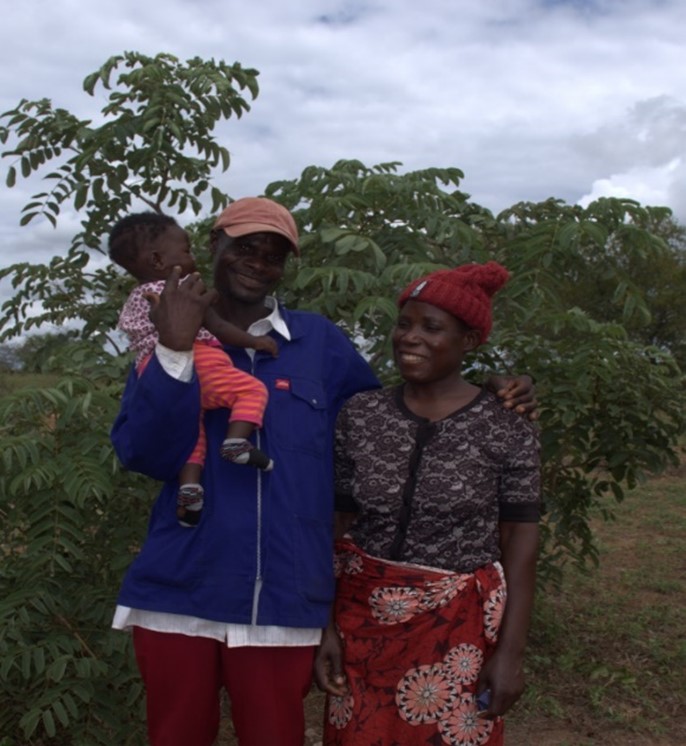Story of Justin and Mazvipesa: Community Health Posts bring hope to families under the TASQC Program through follow up offering Index Case Testing.

 Picture 1: Andrew Gatsi Community Health Services Nurse Counselling a couple after Index Case Testing
Picture 1: Andrew Gatsi Community Health Services Nurse Counselling a couple after Index Case TestingIndex case testing is done when members of a household, biological children and partners of people diagnosed with HIV (the index clients) are offered HIV testing services. With support from PEPFAR through USAID Zimbabwe, in partnership with OPHID and ZNNP+, JF Kapnek Zimbabwe has been implementing community outreaches and establishing Health Posts for community access to health care under the Target, Accelerate and Sustain Quality Care (TASQC) Program.
The community health post initiative gives people in hard-to-reach areas access to health services in their locality. TASQC-supported facilities have health posts stationed in the communities. The health post is supported by community outreach agents (COAs) who receive a line list for people to be followed up for services (including index case testing) in the health post catchment area.
The COAs follow up the clients and link them to the health post for services. Index case testing (ICT) involves tracking and tracing of biological children and sexual contacts of newly diagnosed people living with HIV (PLHIV), providing them with testing services. When a person tests positive for HIV, the COAs facilitate linkage to antiretroviral therapy (ART) by introducing them to the health post. A Community Health Services Nurse (CHSN), who oversees several health posts on a roving basis brings ART refill, collects viral load samples, provides testing and counselling during his regular scheduled visits to the health post.
In Monyoroka village, a hard-to-reach area in Chiredzi town, located on the south-eastern part of Zimbabwe, is Binyu health post. Through the work of the COAs from the health post, a couple (Justin and Mazipeza Ncube) were followed up for Index Case Testing. They were happy that now they could both live healthier lives on anti-retroviral treatment. Mazvipesa (Wife) to Justin presented with sores around the genitals of herpes simplex virus 2 (HSV-2) in 2018 and during her treatment, nurses encouraged her to get tested for HIV. She agreed and she tested HIV positive, received counselling, and was initiated on ART. Even though she disclosed her HIV status to her husband Justin, he was not keen on going to get tested immediately.
“It’s a very long distance that we had to walk to reach the main road for transport that can take us to Chiredzi for health services such as HIV testing. The bus fare is also expensive I am currently unemployed. So, this made it difficult for me to go for the test.”
said Justin who looked visibly frail after recently suffering from Tuberculosis.
When the Community Outreach Agent for the area, Munyaradzi Gwene visited the couple and offered index testing, Justin was happy to get the HIV self-test kit right at his doorstep. The COA explained to him how to use the HIV self-test kit. After a reactive test, Munyaradzi told Justin that the Community Health Services Nurse, Andrew Gatsi would come and perform a rapid HIV test to check and confirm the result. After the confirmatory test and counselling, Justin was initiated on ART. His wife Mazvipesa was very happy that her husband would now have a happier and healthier life. The 36-year-old mother of four is a beneficiary of the elimination of Mother to Child Transmission (EMTCT) program as she delivered her fourth child after her HIV diagnosis. The 9-month-old baby tested HIV negative and is currently on cotrimoxazole prophylaxis as she is still breast feeding.

“I have been on ART for the past four years and I have been happier and healthier, I am so happy that my husband will now get to experience a healthier life. We can now say we are drinking buddies as we will be taking our medication at the same time together”
– Mazvipesa
Munyaradzi Gwene, the COA was very happy to see couples work together in following the ART guidelines. He indicated that long distances to health facilities, stigma, and denial could cause most people would rather go without health services. It took Justin almost four years to finally get tested and get the adequate treatment after his wife was diagnosed HIV positive. Community Outreach Agents are key in the identification of previously undiagnosed PLHIV and linking them to care. They link the community with the health posts and health facilities for services. Physical follow ups of contacts on the line lists.
Community outreach programs have aided in reducing congestion at facilities as clients can receive services at health posts close to them. Services like ART refills, viral load collection, TPT initiation and VIAC are delivered at no cost to the clients near to their place of residence. Barriers in accessing services, including, travel cost, distance and time to travel to the health facility for services are significantly reduced by the availability of health posts.
